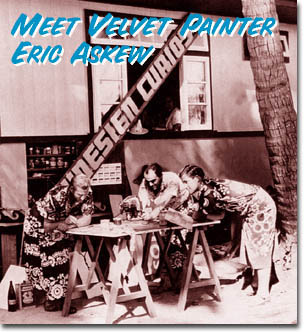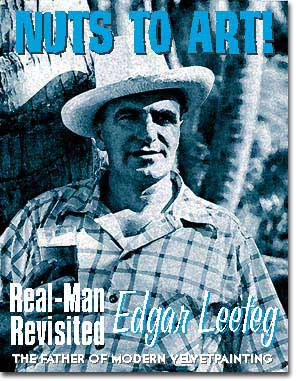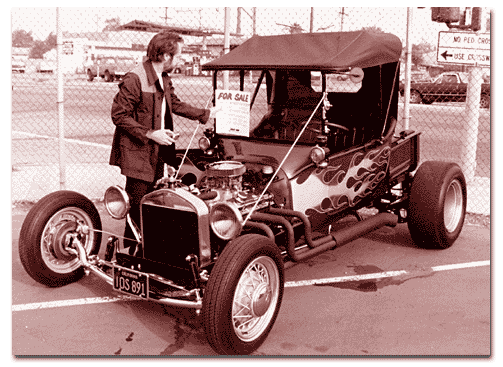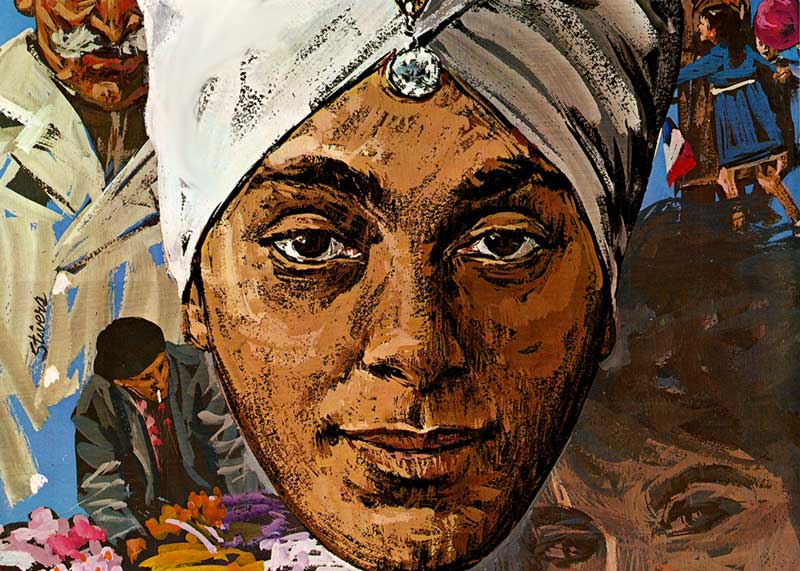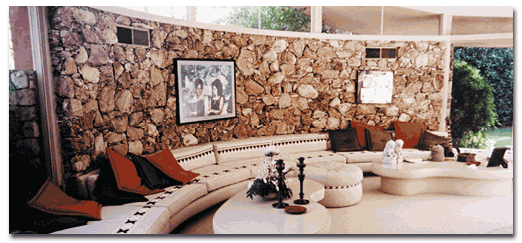
Elvis’s Honeymoon Hideaway
Palm Springs has received a lot of attention lately for its wealth of modern and post-modern architecture. One architecture firm was largely responsible for a changing the face of Palm Springs from a sleepy desert town into a jet-setting community of the future. The firm was the Alexander Construction Company, founded by Robert Alexander and his father George.
The Alexander Construction Company was quite prolific. Between 1947 and 1957, they built 2,200 modern-style homes around Palm Springs. The company’s homes had such a large influence on the character of Palm Springs during that period that realtors often use the word “Alexander” almost like an adjective when describing a modern-styled building.
Pre-modern architectural design had always been hindered by limitations imposed by building materials and techniques. But modernists had new techniques and materials available to them and could seemingly build anything they dreamed up. Form would no longer so slavishly follow function for them and they set out to break all conventions.
The most obvious manifestations of conventional architecture were the right angle, symmetrical angles and parallel lines. Modernist architects added curves, askew angles and free-standing elements to their designs as a break with restraints of the past and an embrace of the future’s potential.
Located at the end of Ladera Circle in Palm Springs, California, the “Elvis Honeymoon House” is a classic example of modern architecture. The house was designed by Robert Alexander in the early 1960s. Its primary design consists of four circular structures on three different levels. (The circular motif is why the house is sometimes referred to as the “platter house.”) The front entrance of the house has free-standing steps made out of circular stones that casually rise up over a man-made stream and lead to the front door.
The house has large windows, with wide-open, beautiful mountain views. This combines with the “peanut brittle” masonry to keep the house from ever feeling too sterile or far-removed from the nearby natural desert terrain. In true modernist style, the house fits in with the severe climate of the desert, yet it is never subservient to it.
The livingroom has a built-in 64-foot curved sofa that runs along the outer circumference of the room. Through the back of the livingroom is a view of the pool and patio and the nearby mountains. The circular theme continues with the focal point of the livingroom — a round, free-standing gas fireplace with an exhaust shroud that looks like the engine from a Saturn rocket.
In addition to the central air conditioning system, the house also features a centralized vacuuming system, an innovation first used by visionary modernist architect Irving Gill. Each room has a plate mounted on the baseboard, which a vacuuming attachment hooks into. The suction for vacuuming the entire house is provided from a single machine, eliminating the need to drag a portable vacuum cleaner from room to room.
The circular section of the home which is most easily visible from the street contains the master bedroom. The jet-age feeling of the house is most apparent here. The bedroom portion sits atop a stone wall and is flanked by what appears to be two straight supports that meet at a point in the front of the house and point skyward.
The master bathroom contains a shower and a very deep bathtub recessed into the floor and set at an askew angle to the surrounding walls.
In 1962, Look magazine ran and article called “The Way Out Way Of Life.” It featured the Alexanders and their “House Of Tomorrow.” The article included photos of the jet-setting Alexanders lounging on their gigantic sofa. There was also a photo of Mr. Alexander in front of the house, heading to work with briefcase in hand. It shows him cooly hopping into his Jaguar and dressed in desert casual meets modern professional attire. There were also photos of Mrs. Alexander playing socialite, hobnobbing poolside with no less of a celebrity than Mrs. Zeppo Marx.
The Alexanders were much-celebrated in Palm Springs and enjoyed their house as a hub of local social life. Tragically, in 1965, the jet-setting lifestyle took an ugly turn when the Alexanders were killed in a small plane crash.
It is an incredibly interesting house solely on the merits of its modern design and the fact that it was the personal residence of such an influential Palm Springs architect. However, the house had a second chance at fame when it became the residence of Elvis Presley.
In the mid-1960s, Elvis was as much of a movie star as he was a singer. As such, he spent a lot of time in Hollywood shooting films. Elvis’s manager, Colonel Tom Parker, lived in the same neighborhood as the Alexanders house and thought it would make a good house for Elvis to use as a retreat from the scrutiny of the media in Los Angeles. In 1966, he rented the house for Elvis at the cost of $21,000 a year.
Elvis entertained friends and his fiancee Priscilla at the house. He would often ride into town on his Harley for ice cream or to race go karts. It was in the Palm Springs house that Elvis had one of his most infamous moments — shooting out a TV screen with a pistol.
In 1967, Elvis and Priscilla were to be married by the pool in the backyard of the house. But the arrival of friends and family tipped off then-leading gossip columnist Rona Barrett (who also lived in the neighborhood) that a wedding was imminent. As the media descended upon the house, Elvis and Priscilla changed plans, deciding to get married in Vegas. In the middle of the night, they snuck into an alley behind the house, where a limo took them to Frank Sinatra’s learjet. They were married in the Aladdin Hotel.
The next day they returned to honeymoon in the Palm Springs house, which is how it got its nickname as the “Elvis Honeymoon House.”
The house has been returned to its mid-1960s splendor (minus the shag carpeting) and is adorned with Elvis memorabilia.
See more photos of the house in the print edition of Barracuda #11.
